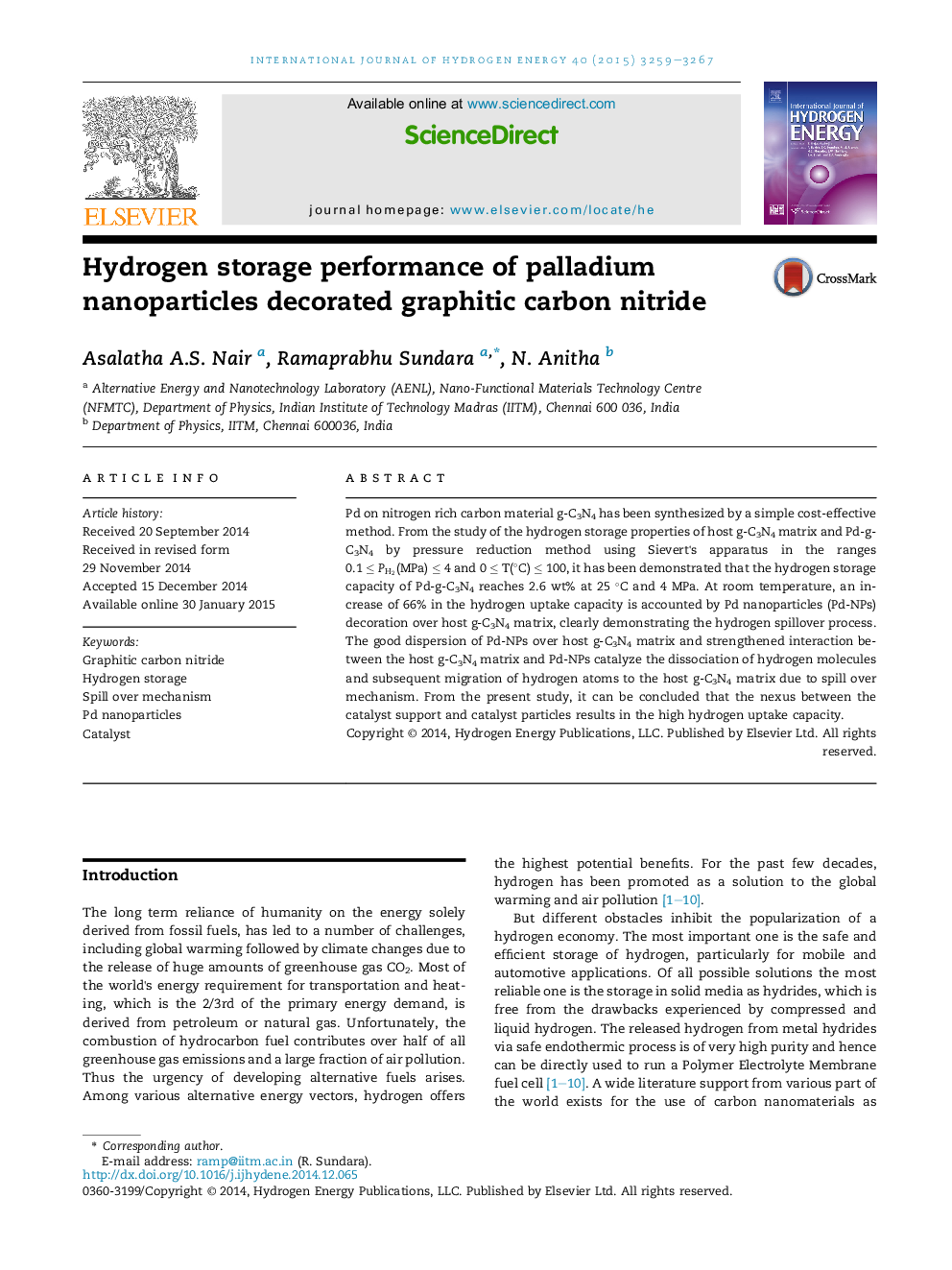| Article ID | Journal | Published Year | Pages | File Type |
|---|---|---|---|---|
| 1272021 | International Journal of Hydrogen Energy | 2015 | 9 Pages |
•Pd dispersed nitrogen rich carbon material g-C3N4 is synthesized.•Pd-NPs over host g-C3N4 matrix results in spill over mechanism.•Nexus between Pd-NPs and g-C3N4 resulted in high hydrogen uptake capacity.•Demonstration of high hydrogen storage capacity of Pd-g-C3N4.•Pd-g-C3N4 has hydrogen storage uptake of 3.4 wt% at 25 °C and 4 MPa.
Pd on nitrogen rich carbon material g-C3N4 has been synthesized by a simple cost-effective method. From the study of the hydrogen storage properties of host g-C3N4 matrix and Pd-g-C3N4 by pressure reduction method using Sievert's apparatus in the ranges 0.1 ≤ PH2PH2(MPa) ≤ 4 and 0 ≤ T(°C) ≤ 100, it has been demonstrated that the hydrogen storage capacity of Pd-g-C3N4 reaches 2.6 wt% at 25 °C and 4 MPa. At room temperature, an increase of 66% in the hydrogen uptake capacity is accounted by Pd nanoparticles (Pd-NPs) decoration over host g-C3N4 matrix, clearly demonstrating the hydrogen spillover process. The good dispersion of Pd-NPs over host g-C3N4 matrix and strengthened interaction between the host g-C3N4 matrix and Pd-NPs catalyze the dissociation of hydrogen molecules and subsequent migration of hydrogen atoms to the host g-C3N4 matrix due to spill over mechanism. From the present study, it can be concluded that the nexus between the catalyst support and catalyst particles results in the high hydrogen uptake capacity.
Graphical abstractFigure optionsDownload full-size imageDownload as PowerPoint slide
